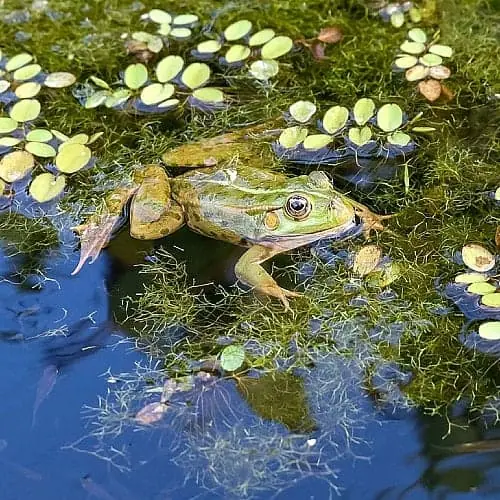
Frogs are cute, incredibly unique animals that lend a more natural, genuine ambiance to your garden pond. With over 6,000 species worldwide, they are the most numerous and diverse group of amphibians. Even if you don’t find these little critters to be particularly appealing, they do perform some pretty important functions that could greatly benefit your backyard pond!
A typical frog can eat over 100 insects and other pests just overnight, including mosquitos and ticks that can carry potentially deadly diseases. Considering frogs prefer to live in groups, this can really help cut down on any unwanted bugs you might have around your property and prevent them from becoming too abundant in the future.
Frogs, like all amphibians, are also very sensitive to ecosystem disturbances, and because of this can give you advanced warning if your pond isn’t healthy before it affects your fish and plants too much. If you notice frogs are suddenly leaving the area, you may need to make some changes.
So, interested yet in welcoming some new frog residents to your pond? If so, below are a few simple, key ways to make them want to call your oasis home:-
1) Keep it Natural
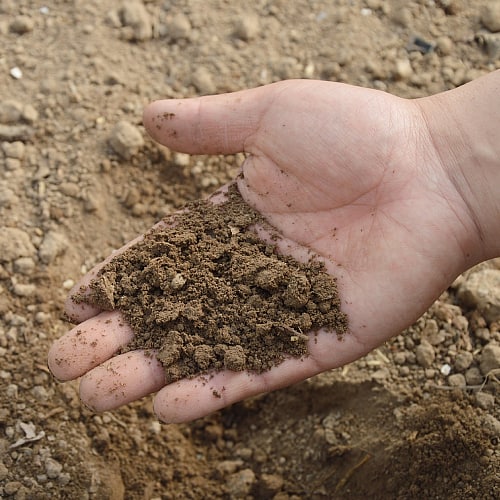
As mentioned before, frogs are quite sensitive. Their skin is semi-permeable, meaning that they obtain all of their moisture and much of their oxygen by absorbing it through their skin rather than drinking or breathing as we do. Unfortunately, this means that they also soak up whatever else may be in the water and soil, such as fertilizers or any other chemicals. These compounds can cause a variety of issues, from deformities to death. If you have a garden pond, you’ll want to minimize the usage of these anyway to ensure that it remains healthy and naturally well-balanced.
As frogs live both on water and land, try to avoid using fertilizers or chemicals such as pesticides anywhere near the pond. You can maintain your pond’s pH and oxygen levels by using aquatic plants and water filters. There are also plenty of natural ways to take care of your yard, such as only planting native plants and grasses that are adapted to local conditions, creating a few small holes or “plugs” throughout your yard to allow for better air flow (frogs will also likely use these holes as burrows!), and not mowing your grass too often, which dries it out. Many people apply fertilizers and excess water to their yards because the grass appears unhealthy, but in many cases simply mowing less often will result in a more vibrant lawn, as grass is generally healthiest at around 3 inches tall.
2) Create a Safe Haven
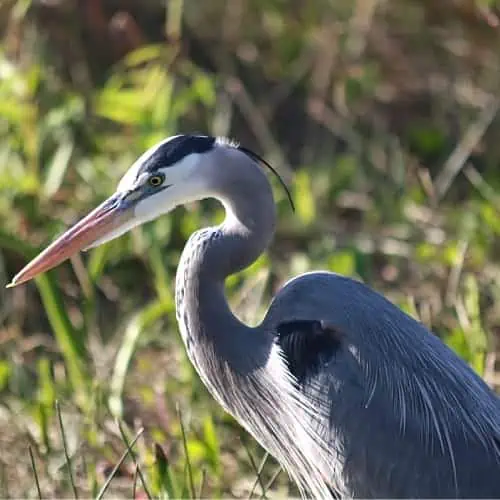
Since frogs are fairly small, they have a lot of natural predators. To deter predators, you could set up a decoy heron or hawk, as these birds will usually stay away from areas if they think it’s already claimed by another individual. For smaller birds, you can draw them away from your pond by placing bird feeders and bird baths in strategic locations as far away from your pond as possible. Many predators, such as owls and raccoons, are active at night. You can discourage them from eating your fish and frogs by placing netting over the area at night that’s large enough to allow frogs to pass through without injuring themselves, but too small to allow much of anything else in.
Frogs also prefer to have lots of little hiding places that double as shelters from predators, the sun, and elements. Throughout your yard, place rocks, small hollow logs, or even clay flower pots turned upside down and propped up slightly for a more whimsical look. These refuges should be located in shady areas, as frogs will easily dry out in the sun. Around and in your pond, plant long grasses and broad-leafed plants that are more difficult for predators to see through – these will also allow frogs to more easily enter and exit your pond, as they can grip onto the plants, in addition to improving water quality. You can also place rocks, PVC piping and even fish shelters in your pond to allow for underwater hidey-holes for both fish and frogs!
3) Plants, Plants, & More Plants!
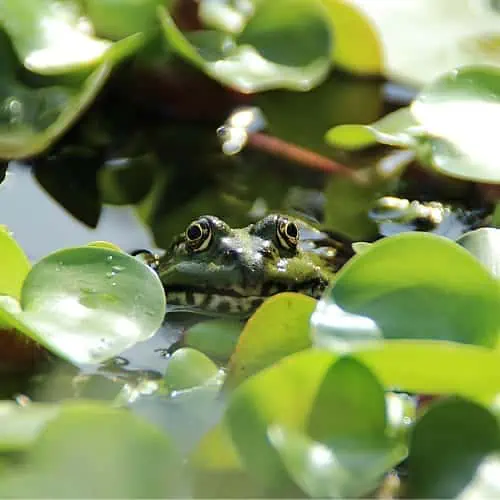
Pond plants provide hiding places, shade, and also improve water quality, all of which will encourage breeding and promote a stable population of frogs. Within the pond, water lilies are a wonderful option, as frogs can hide beneath them, lay their eggs on the underside of the leaves, or rest on top of them. The flowers will also bring in insects for them to feast on, and many of the insects will serve as pollinators for some of your other plants. It’s also important to allow a small amount of algae to grow in the water, as both fish and tadpoles will feed on this. Too much algae, however, and you can cause issues with water quality and fish health (if you have any), so finding a balance is key! If you’re battling an algae bloom and have frogs, always opt for non-chemical algae treatments, never harsh algaecides, as they’ll quickly kill frogs and other wildlife.
On the pond’s edge, hostas, sedges, ferns, and long grasses will not only supply habitat, shelter, and shade, but will also help soak up (to a degree) harmful things like fertilizer before it reaches the water. However, make sure than any plants you use are not toxic. For example, rhubarb, daffodils, and honeysuckle are poisonous to most frog species so you’ll want to avoid planting them anywhere near the pond if at all possible.
4) The Perfect Layout
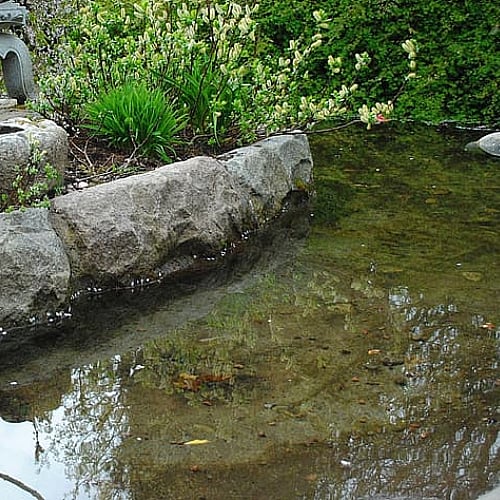
To allow for easy entering and exiting, make sure that at least one side of your pond has a gradual, shallow edge of 45 degrees or less. You can also use logs, rocks, and plants that they can effortlessly jump onto and use as exit routes. In addition, your pond should have an area that is at least a couple of feet in depth to provide plenty of spawning habitat. The greater depth will also supply cooler water during hot periods, and prevent it from drying up if a drought occurs. Frogs avoid overly turbulent water, so try to stay away from incorporating waterfalls or too powerful of an aerator into your pond.
Along the edges of your pond, small pebbles, loose gravel, or a similar substrate will help filter water running off into your pond while also offering prime habitat for macroinvertebrates like caddisfly larvae, dragonfly larvae, and crayfish. Many of these are valuable food sources for frogs, and also sensitive to pollution – if you have these neat, tiny creatures in your pond, you can be sure it’s reasonably healthy! Plus, who doesn’t like watching colorful dragonflies zip around? By contrast, if you find undesirable aquatic invertebrate species like leeches or midges, their presence is a pretty good indicator that your pond could use a good cleaning and oxygen boost.
5) Species Research
This one may sound too simple, but one of the best ways to make sure you attract frogs is to figure out which species are native to your area. You can then quickly look them up and determine exactly what they like and how to incorporate those things into your pond and garden. Depending on the type of frogs you have, they may prefer slightly different environmental conditions or have varying requirements. The simplest way to determine the species is with a quick online search with their color, patten, approximate size, and your location.
You can also make use of various websites which can provide a good list of different animal species which may be native for your area, such as Map of Life or animal watch groups.


Thank you so much for all this great information about frogs! I’m going to try some of them because I would dearly love to have frogs in my small pond.
Hi Julia,
I’m so glad that the information was helpful to you! I hope that you’re able to draw some in!
Will I only actracted frogs if I live in the country and near water, what if I live in the suburbs away from the country but not far from the city centre?
Hi, and to your question “Will I only attract frogs if I live in the country and near water, what if I live in the suburbs away from the country but not far from the city centre? ” and to answer your question, yes, you would attract frogs from the country, definitely has to be near water. But it always doesn’t have to be the country, it could be just somewhere near any pond, creek, lake, or even river. Even if there is any type of water source like that near where you live, you can still attract them. But if there isn’t a water soure, then no.
We use to have a lot of frogs and toads but a couple of years ago they all disappeared?
Have you ever heard of this before please
I used to have a lot of frogs in my pond and in the couple of years all of them have disappeared and have not returned. What have I done wrong and how can I get them back. Would buying tadpoles help? I love frogs as they sing me to sleep at night. Any advice would be appreciated. I live in NE Helen Georgia
Truly a frog lover.
Renee